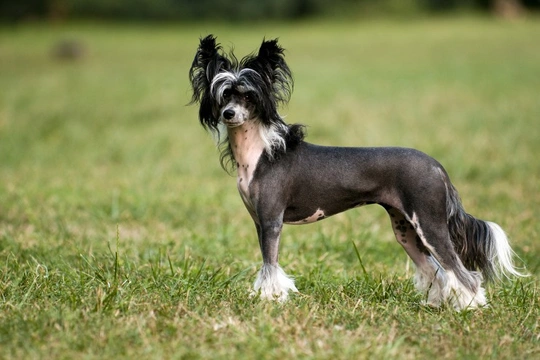
Five of the most unique and unusual dog breeds
There are hundreds of registered dog breeds that are acknowledged by at least one major breed registry somewhere in the world, and so much variation between different breeds that sometimes, it can be a stretch of the imagination to believe that all dogs are close relatives. After all, there’s not a lot in common in terms of the appearance of the Chihuahua and the Great Dane, but these two breeds at opposite ends of the size spectrum still have more in common than they do apart.
However, even given how unique individual dog breeds are from each other, there remain several dog breeds that are highly distinctive and unusual in appearance over and above the normal variations that occur from breed to breed. While some such breeds are very rarely seen at all in the UK and most dog owners will never have seen even a single example, others are highly popular as UK pets – and some are even our own native dog breeds.
In this article, we will share a selection of five of the most unique and unusual dog breeds, and outline the unique traits that make them so special. Read on to learn more.
Chinese crested hairless variant
The Chinese crested dog breed comes in two variants – the powder puff, which has soft, fluffy and reasonably long fur, and the rather more unusual hairless variant, which does not!
The hairless variant of the Chinese crested dog breed lacks the normal covering of fur that their hairy cousins possess due to a dominant genetic mutation that causes hairless dogs of the breed to be born with only a smattering of fur on their heads and tails, and sometimes a few other areas of the body too.
Because of the mode of heredity of the hairless gene variant, a litter of Chinese crested dogs will often contain both powder puff and hairless variants, and despite how very different from each other the two types look when adult, they are indeed the same breed, and in some cases, siblings!
Hungarian Puli
The Hungarian Puli looks like any other normal, fluffy-haired dog when they are born, but as they get older, their coats naturally form into dreadlocks or cords, which give the dog a very distinctive appearance that is highly uncommon and only shared with a couple of other breeds.
However, while most people who have never sported dreadlocks themselves assume that this hairstyle virtually takes care of itself, whether on a person or a dog, this is not accurate – and Hungarian Puli owners need to groom, care for and maintain their dog’s coat cords properly to keep them in good condition and avoid problems.
Bedlington terrier
The Bedlington terrier is a native British dog breed that hails from Bedlington in Northumberland, and while they are true terriers and recognised within the terrier grouping, their appearances also have a lot in common with many sighthound breeds too, such as a lean body, long neck and proportionally long, fine legs.
However, while the shape of the Bedlington terrier’s body is reasonably distinctive in and of itself, it is the shape and style of the fur on their heads that gives them a very unusual appearance, that many people liken to being similar to that of a lamb!
The plume of curly or wavy fur across the crown and moving downwards between the eyes towards the nose naturally forms itself into a raised convex stripe that some people say looks like a reverse Mohican, and gives the dog a distinctive shape to the head and crown. However, if the dog’s face and head are clipped of this fluffy, springy fur, the shape of their heads looks very different!
Shar-Pei
The Shar-Pei dog breed is unmistakable thanks to their incredibly loose, wrinkled skin, which is covered in very bristly and even harsh-feeling fur, which often comes as a surprise to people who meet one for the first time.
As well as lots of skin that makes the dog look as if they are perpetually wearing a suit of clothes that are too big, the Shar-Pei also has a blue-coloured tongue, which may appear as a very obvious shade of blue or even black.
Catahoula leopard dog
Finally, the Catahoula leopard dog is one dog breed that you are highly unlikely to see in the UK, but no list of unusual-looking dogs could be complete without giving the breed an honorary mention!
They have a distinctive coat patterning of mixed patches and spots, often with very distinctive and bright eye colours too, such as a luminous amber shade. As well as having a very unusual physical appearance, the Catahoula leopard dog also has some unusual skills as well, such as the ability to climb trees – and this trait, combined with their interesting coat colour and patterning is what led to their being known as the Catahoula leopard dog.



